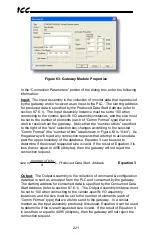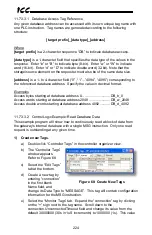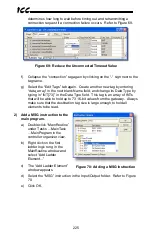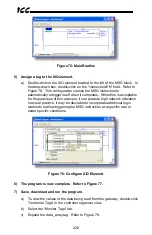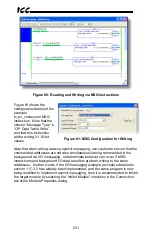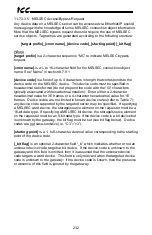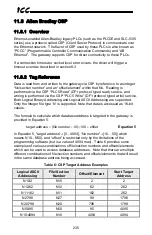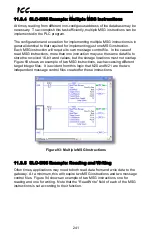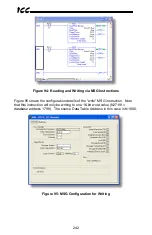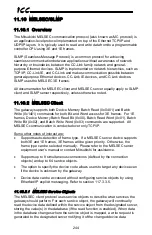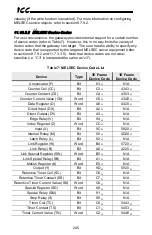
235
ICC
11.8
Allen Bradley CSP
11.8.1
Overview
Ethernet-enabled Allen-Bradley legacy PLCs (such as the PLC5E and SLC-5/05
series) use a protocol called CSP (Client Server Protocol) to communicate over
the Ethernet network. The flavor of CSP used by these PLCs is also known as
“PCCC” (Programmable Controller Communication Commands) and “AB
Ethernet”. The gateway supports CSP for direct connectivity to these PLCs.
If a connection timeout or socket-level error occurs, the driver will trigger a
timeout event as described in section 8.3
11.8.2
Tag Reference
Data is read from and written to the gateway via CSP by reference to an integer
“file/section number” and an “offset/element” within that file. Reading is
performed via the CSP “PLC5 Read” (DF1 protocol typed read) service, and
writing is performed via the CSP “PLC5 Write” (DF1 protocol typed write) service.
Both Logical Binary Addressing and Logical ASCII Addressing are supported.
Only the Integer file type ‘N’ is supported. Note that data is accessed as 16-bit
values.
The formula to calculate which database address is targeted in the gateway is
provided in Equation 5.
(
)
offset
100
10
-
number
file
address
target
+
×
=
Equation 5
In Equation 5, “target address”
∈
[0…4094], “file number”
∈
[10…50] (which
means N10…N50), and “offset” is restricted only by the limitations of the
programming software (but is a value of 4094 max). Table 6 provides some
examples of various combinations of file/section numbers and offsets/elements
which can be used to access database addresses. Note that there are multiple
different combinations of file/section numbers and offsets/elements that will result
in the same database address being accessed.
Table 6: CSP Target Address Examples
Logical ASCII
Addressing
File/Section
Number
Offset/Element
Start Target
Address
N10:2
N10
2
2
N12:62
N12
62
262
N11:162
N11
162
262
N27:98
N27
98
1798
N20:798
N20
798
1798
N50:95
N50
95
4095
N10:4094
N10
4094
4094

